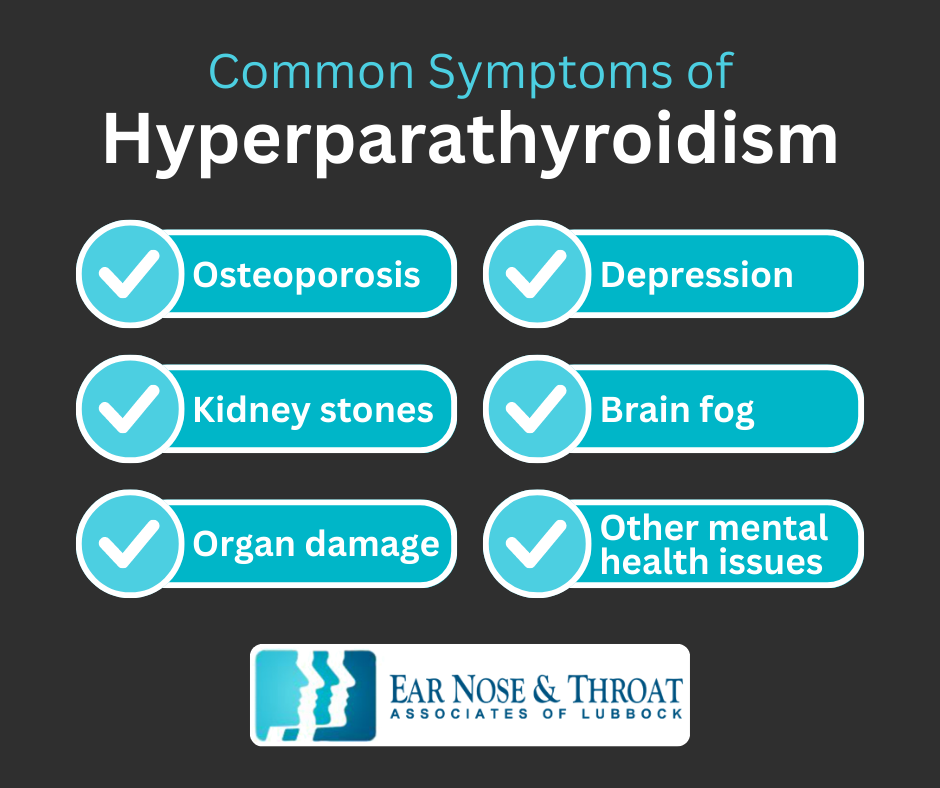Parathyroid Exploration: From Surgery Prep to Recovery

Symptoms like weak bones, kidney stones, joint pain, and mental fog can make it very difficult to thrive in daily life. Few people realize an overactive parathyroid gland may be the culprit.
If you have one or more overactive parathyroid glands, you’ll likely need one of two types of surgery: parathyroid exploration or minimally invasive parathyroidectomy (MIP). Keep reading to find out if it may be necessary for you and what you can expect from the procedure and its outcome.
Why Do People Need Parathyroid Surgery?
First, let’s start with the basics:
Your thyroid is a butterfly-shaped gland located at the front of your neck. Behind it are four small glands called parathyroid glands. There are two on each side: an inferior (lower) and a superior (higher) gland.
Your parathyroid glands are about two to four millimeters in diameter, smaller than a grain of rice. Though tiny, they play a significant role in your bodily functions. These tiny glands make a hormone called parathyroid, which regulates the calcium levels in your bones and blood.
Sometimes, one or more of these glands (usually just one) can balloon to 20 or 30 times its normal size. That’s like growing from the size of a grain of rice to a marble, or larger!
The enlarged gland — called a parathyroid adenoma — goes completely rogue, producing a nonstop supply of parathyroid hormone. The result is a condition called hyperparathyroidism, which is the most common reason we perform MIP or parathyroid exploration surgery.

What Are Common Hyperparathyroidism Symptoms?
When you have hyperparathyroidism, all the excess parathyroid hormone in your body strips the calcium from your bones, which you then excrete in your urine. This can lead to a host of unpleasant symptoms, including:
- Osteoporosis
- Kidney stones
- Organ damage
- Depression
- Brain fog
- Other mental health issues
Hyperparathyroidism has earned quite a memorable nickname as “the illness of bones, stones, and abdominal groans.” Some people even add “psychic moans” to the list, since the excess hormone can affect a person’s mental health.
How Is Hyperparathyroidism Diagnosed?
To diagnose hyperparathyroidism, we conduct biochemical testing, which gives us more insight into your calcium, parathyroid hormone, and vitamin D levels.
If these blood tests indicate hyperparathyroidism is present, we then use localization studies to find which parathyroid gland is enlarged. This process sometimes includes a thyroid ultrasound, a radioactive tracer study called a sestamibi (MIBI) scan, or a 4D CT scan.
Thankfully, our ability to find the enlarged gland has improved tremendously over the past several years, reducing the need for locating the offending gland during a parathyroid exploration.
MIP vs. Parathyroid Exploration
Whenever possible, we prefer to use minimally invasive parathyroid surgery (MIP) to treat hyperparathyroidism. This procedure is much more common now because of the improvements in our ability to pinpoint the location of the problem-causing gland.
MIP is a quick surgical procedure that allows us to use very small incisions and remove the enlarged gland with precision, all with minimal risk to you.
Sometimes, however, we’re not able to locate the problematic parathyroid gland before surgery. In these cases, we may need to perform a parathyroid exploration surgery to look at all four glands and determine where the problem lies.
What to Expect Before the Procedure
Before parathyroid surgery, you’ll need biochemical testing to confirm hyperparathyroidism. If the results are positive, you’ll undergo localization studies like those mentioned above to pinpoint the gland(s) we need to remove.
What to Expect During the Procedure
Whether we use MIP or parathyroid exploration surgery, it’s usually an outpatient procedure. Depending on how many glands we need to look at, the surgery takes about 20 minutes to 1.5 hours. It’s always best to choose a high-volume surgeon; their familiarity with the procedure not only reduces the likelihood of complications but can also mean a quicker surgery.
For parathyroid exploration, we use a thyroidectomy incision in the front center of the neck to access your parathyroid glands. If we’re able to use MIP, then we can make much smaller incisions to remove the overactive gland.
After we remove the gland, we use invisible sutures to close the skin and apply Steri-Strips to securely bring both sides of the incision together and seal the opening. A wound drain is not necessary for this procedure.
What to Expect After the Procedure
Once we remove the enlarged gland, your calcium and parathyroid hormone levels should return to normal within as little as 20 minutes.
Whether we need look at all four glands with a parathyroid exploration or we’re able to do the minimally invasive parathyroid surgery, post-op recovery is minimal.
After a period of observation, most patients will be able to go home the day of their procedure. We ask you to check into the office the next day for a follow-up to make sure there are no complications. The most common complaints after parathyroid surgery are soreness at the incision site and slight neck pain, which is the result of your head positioning during surgery. Both of these complaints usually only last a day or two; then, you are back to normal activity.
Dr. Scolaro is a board-certified Otolaryngologist servicing the South Plains area. He has been practicing in Lubbock since 1990 and has earned a reputation as a skilled and experienced surgeon. He currently serves as the Medical Director for Covenant High Plains Surgery Center campuses, is a member of Covenant Health Partners and is an adjunct faculty professor for Texas Tech University Health Sciences Center School of Medicine. Learn more about Dr. Scolaro.
Categories:








